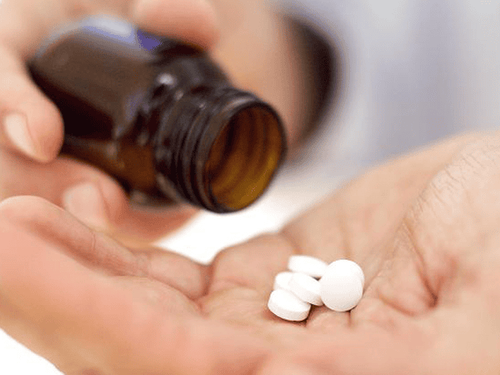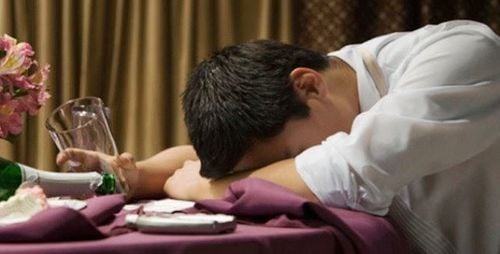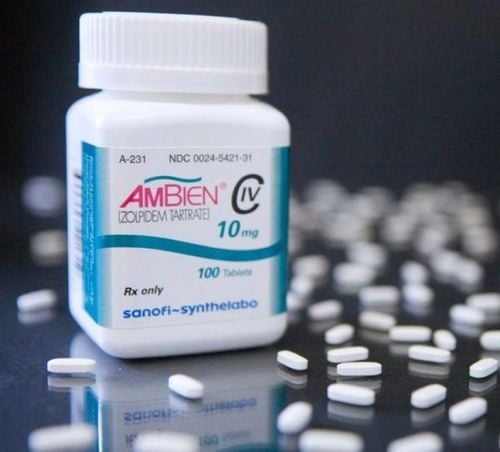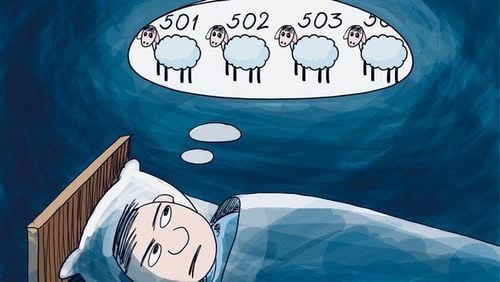This is an automatically translated article.
The article is professionally consulted by Master, Doctor Bui Ngoc Phuong Hoa - General Internal Medicine - Department of Medical Examination & Internal Medicine - Vinmec Danang International General HospitalSleep disorders are very common manifestations in medicine in general and in psychiatry in particular. Sleep disturbances can seriously interfere with normal physical, mental, and social activities, and have a major emotional impact.
1. Classification of sleep disorders
Group 1: Includes disorders related to different quality, quantity and timing of sleep.
Group 2: Including unusual phenomena occurring in sleep.
Trắc nghiệm: Bận rộn có ảnh hưởng đến sức khỏe của bạn không?
Cuộc sống hiện đại khiến chúng ta vì quá bận rộn mà quên chăm sóc sức khỏe cho chính mình. Ai cũng biết rằng lịch trình làm việc cả ngày có thể khiến bạn kiệt sức, nhưng cụ thể bận rộn ảnh hưởng thế nào tới sức khỏe? Hãy cùng làm thử bài trắc nghiệm dưới đây.
2. Common types of sleep disorders
2.1. Insomnia Insomnia is a subjective complaint of sleep sufferers: not sleeping enough time, sleep quality is not good, meaning that when people wake up, they still feel that their physical and mental health has not recovered. , feeling sluggish, tired, still sleepy. Depending on the individual case, it can be manifested by difficulty falling asleep, waking many times during the night, waking up early or there may be a feeling of complete lack of sleep. The rate of insomnia accounts for about 10-15% of the population, in which temporary insomnia is the most common. The prevalence of insomnia increases with age, and the rate of women is twice as high as that of men.
Temporary insomnia
Appears a few nights or for a short period of a few weeks, in normal people. Temporary insomnia is the most common disorder affecting 30 to 40% of the population.
Insomnia secondary to mental or physical illness
Mental illness causes: all mental disorders can lead to insomnia, 30 to 60% of insomnia cases are caused by mental disorders.
Depressive disorder: early morning insomnia, that is, getting up at 3-4 am. Anxiety disorders: difficulty getting into the lulling phase. Complete insomnia due to mania, paranoid state, confusion: disturbed sleep-wake cycle and often leads to night agitation. Chronic insomnia: personality disorders, addictions often lead to chronic insomnia. Physical causes: many diseases can lead to insomnia, especially the following:
Acute and chronic pain conditions, for example, pain in arthritis often increase at night... Digestive tract diseases: peptic ulcers Urinary diseases: prostate tumors, frequent urination, painful urination... Endocrine diseases: diabetes, hyperthyroidism... Cardiovascular and respiratory diseases: heart failure, bronchitis, asthma... Neurological diseases: Parkinson's disease, Alzheimer's disease, cerebrovascular accident... Caused by drugs and stimulants:
Abuse of stimulants: coffee, drugs leaves, amphetamines, cocaine... Alcohol abuse causes a state of ease into a lulled state but will reduce the time of deep sleep, wake up early and not recover after waking up. Some drugs such as: Theophylline, corticosteroids, stimulant antidepressants, sleeping pills used for a long time. Primary Chronic Insomnia
This type of insomnia brings together the majority of insomnia cases without any particular mental or physical illness. The only symptom is insomnia. The following types are distinguished:
Idiopathic insomnia that develops from childhood: caused by events occurring during the day that the child witnessed. Psychophysiological insomnia is a case of insomnia formed from repeated psychological causes of fear of sleep. For example, dreams or hallucinations cause the person to avoid sleep.
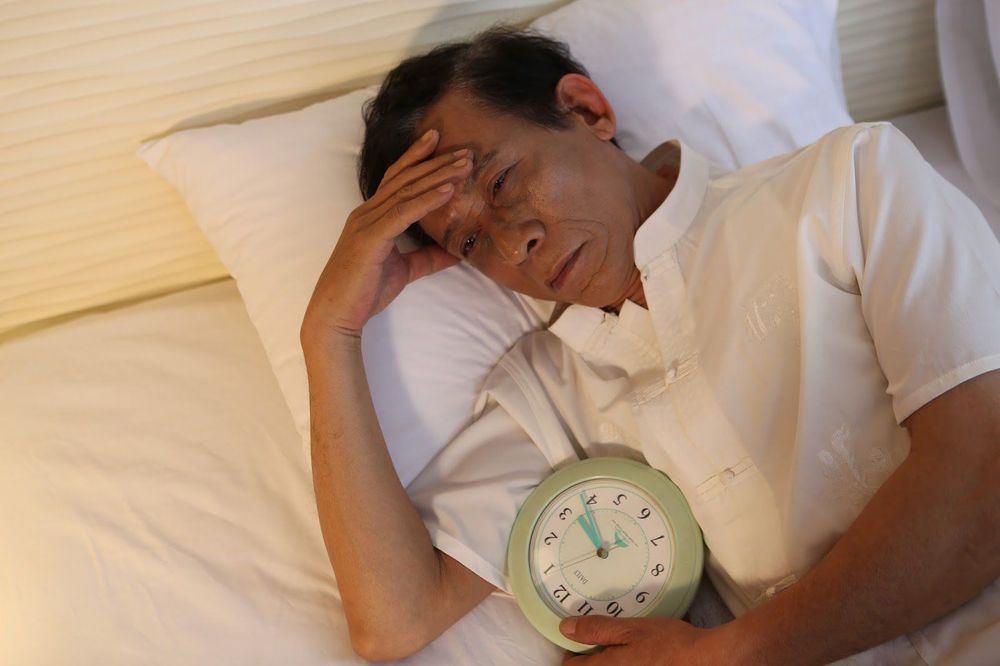
2.2. This disorder is related to the quantity and quality of wakefulness during the day, manifesting in: excessive sleep, somnolence, somnolence. In contrast to insomnia, these wakefulness disorders are often unrecognized and overlooked, making diagnosis and treatment difficult, and structural disturbances of sleep often unrecognized by the patient. out.
Sleep apnea syndrome
During sleep, the patient stops breathing for a few minutes, this phenomenon repeats about 5 times in 1 hour. Before apnea, the patient snores loudly and then stops breathing, repeatedly, followed by very short sleep. The patient is often unaware, followed by breathing again in a very noisy manner. These cases present with frequent urination at night, nightmares, and headaches. During the day doze off, fatigue, loss of concentration, forgetfulness, anxiety... The disease is common in men over 50 years old, overweight.
Sleep a lot due to lack of sleep
Sleep deprivation is often related to people who work too much, work at night, stay on duty, sick relatives, have just given birth... Patients have symptoms: lethargy, difficulty sleeping waking up, dozing during the day, decreased work performance, difficulty concentrating, restlessness, irritability, fatigue.
Drug-induced somnolence
Some drugs in medical indications can lead to excessive sleep such as drugs: psychotropic drugs, sleeping pills, anxiolytics with long half-life, antidepressants, antipsychotics, mood stabilizers, antiepileptics, antiallergics, muscle relaxants...
Narcolepsy
Common in men, begins in adolescence, has 4 symptoms The following events occur:
Drowsiness during the day, often occurring at the same time for each patient, and sudden, irresistible episodes of narcolepsy. The sudden loss of muscle tone lasts for a short time, this muscle relaxation can be whole body or can be localized in a few organs such as: head down, knees... usually occurs when emotional. Visual and auditory hallucinations that occur during the lull stage cause panic. Sleep paralysis is characterized by complete loss of all muscle movement, inability to breathe at a normal amplitude, which occurs on awakening.
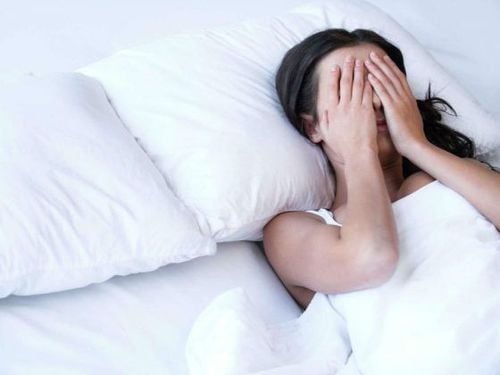
Idiopathic excessive sleep
Manifestations of an abnormally long night sleep, very difficult to wake up in the morning, daytime somnolence. Unlike other types of hypersomnia, the patient can resist the urge to sleep. After a night's sleep and a nap, the patient does not recover. This disorder begins in adolescence or adulthood.
Cyclic movements of the extremities and restless legs syndrome
Cyclical movements of the extremities: occurring during the night on the verge of awakening, manifested by movements within seconds, appearing periodically Every 30 seconds, mainly in the lower extremities, combined with extensor and instep flexion, sometimes combined with knee flexion. The patient does not feel well after waking up, has trouble sleeping at night, and feels fatigued in the lower extremities. These movements increase with age and may be accompanied by narcolepsy, sleep apnea syndrome. Usually occurs in patients taking antidepressants. Restless legs syndrome: appears at night, especially when lying down to sleep. Unpleasant paresthesias such as: feeling of crawling, burning of the lower extremities... are reduced when there is movement, this leads to difficulty entering the lulling stage. Usually occurs around the age of 30 and occurs in the third trimester of pregnancy, in patients treated with antidepressants. 2.3. Circadian rhythm disturbances Early phase syndrome
Characterized by a lull in sleep and early awakening. The patient wakes up around 2-3 am, which leads to the need to sleep early in the afternoon. This disorder is commonly seen in the elderly.
Long diurnal rhythm syndrome
Diurnal rhythms longer than 24 hours with a sleep time difference of about 1 hour per day leading to an increasingly late lull phase. We may experience cases of sleepless nights and daytime somnolence.
Late phase syndrome
Characterized by a late lull to sleep, if you have to get up early to go to work, the patient will fall asleep in the morning.
Change time zone
Insomnia occurs when moving to different time zones. The first is insomnia, the stage of falling asleep when moving to the east and waking up early when moving to the west, combined with fatigue, somnolence, sometimes with mood disturbances. This disorder lasts for about 1 week.

2.4. Abnormal phenomena occurring in sleep Arousal disorders
Drowsiness: mainly in children and adolescents, waking up in a cloudy state, sometimes with spatial disorientation time, there are inappropriate behaviors. This confusion is aggravated by the onset of sleep, often with no recollection, and may be associated with idiopathic polysomnia. Sleepwalking: usually occurs in children, rarely in adults. While sleeping, he suddenly woke up to wander, sometimes climb to the roof, ... often arising from the deep sleep stage in a low state of consciousness. Nocturnal panic attacks: appearing at the beginning of the night, howling and humming, nervous disorders, heart palpitations, heavy breathing, sweating...not waking up and forgetting to remember anything when waking up. Disturbances in the transition from waking to sleep
Startles: 60% of the population has a startle that occurs during the lulling phase, sometimes causing discomfort, sudden muscle contractions of the whole body or part of the body. Speech in sleep: talking or sometimes dialogue, completely benign without treatment. Sleep spasticity: very painful muscle spasms in the calves and feet that disrupt sleep, often occurring in pregnant or elderly women. Paradoxical sleep disorders
Nightmares: frightening dreams awakening, remembering dream scenes but not panicking at night, fear may prevent the dreamer from falling back to sleep. Paralysis during sleep: appearing at night awakening, the phenomenon of loss of muscle tone for a few seconds makes the patient unable to move. Erectile dysfunction during sleep: pain occurs upon awakening accompanied by penile erection. Paradoxical sleep behavior disorder: commonly seen in men over 50 years of age because of the lack of a period of physiological dystonia during the paradoxical sleep phase, patients live and act with their dreams. Complex actions, sometimes dangerous attacks. Disturbances in the light sleep phase: bruxism is characterized by the contraction of the chewing muscles causing the teeth to wear down.
3. Where is sleep disorder examined?

Please dial HOTLINE for more information or register for an appointment HERE. Download MyVinmec app to make appointments faster and to manage your bookings easily.







